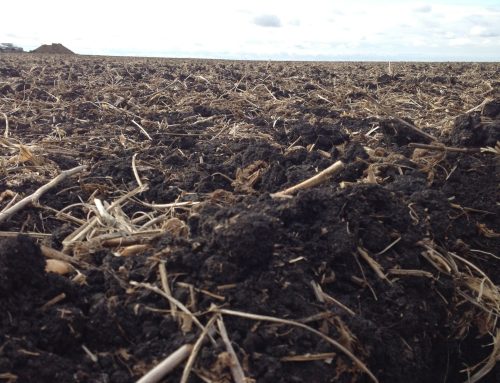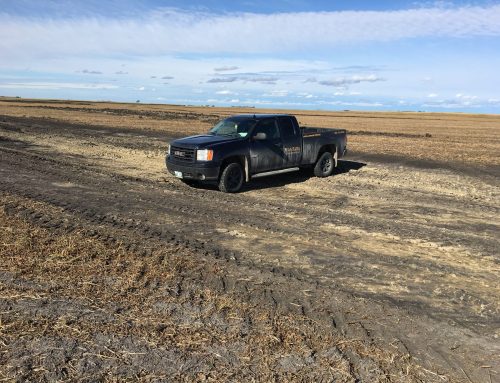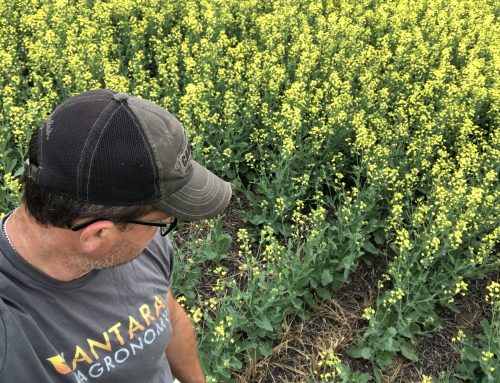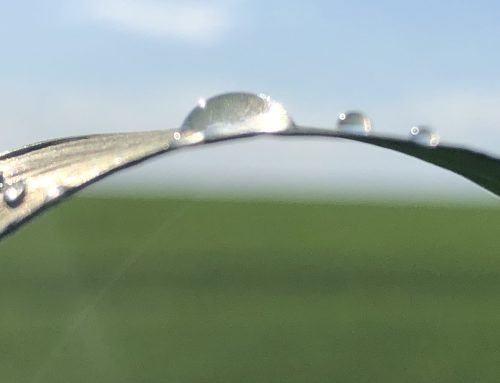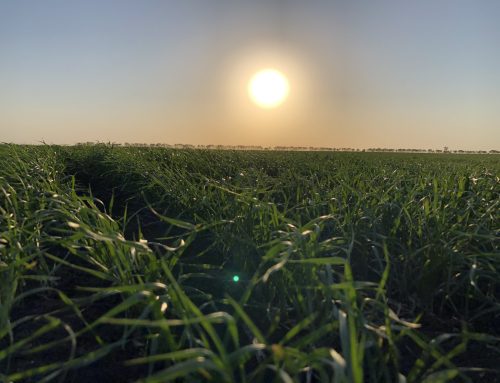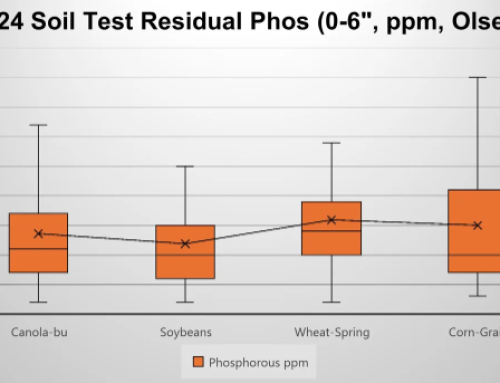It is easy to forget our fields once the harvest is in the bin and the last pull of the disc has passed through the soil to bury the crop residue. Meanwhile those fields sit empty for six to eight months during our Prairie winters. We tuck away the combine in the shed to protect it from the sun and wind, we regularly oil and grease our machinery and upgrade our implements once they have dulled and aged. Do we treat our soil with the same respect? Just like our machines, our fields are valuable and capable of making us a profit. They also degrade and need maintenance to remain profitable. Many forces weather our lands and we need to take the steps to keep our soil as healthy as possible.
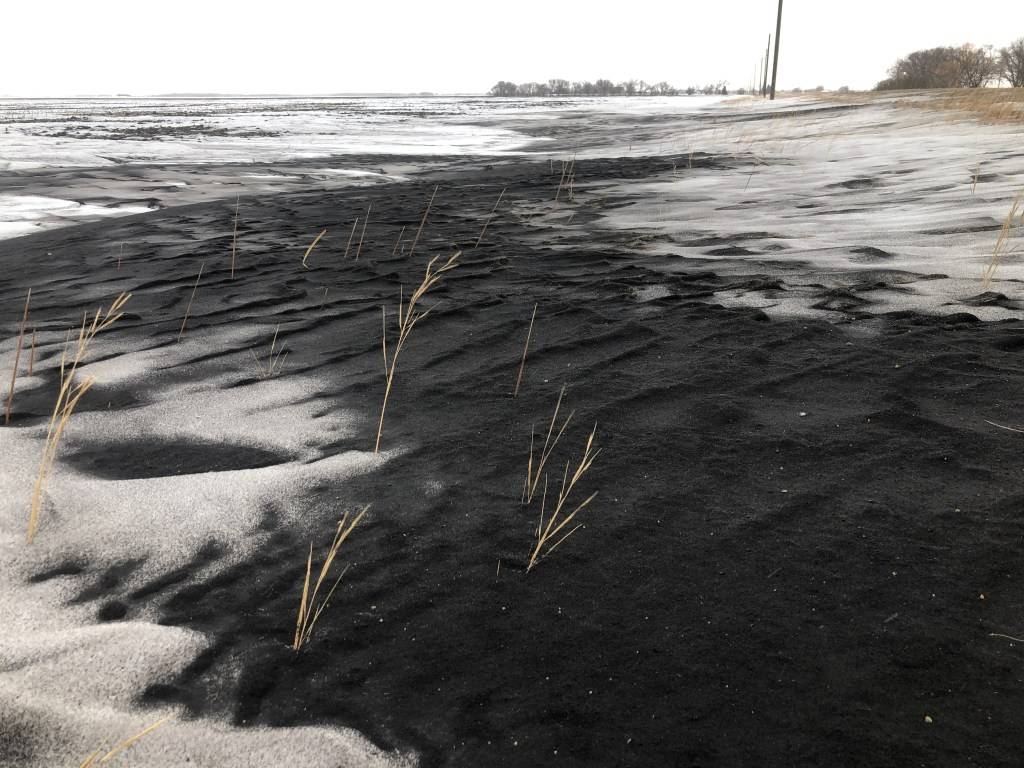
Wind is an eroding force that is only a bother when it steals the warmth of the sunrays while we are suntanning on the beach or when we’d rather be spraying out those thistle patches in our wheat. Not exactly. This natural energy can easily gust across our cut canola and severely lower our yield. Wind is also extremely active in these slow winter months. Not only are the snowshoe hares moving around our fields. Soil particles may be active as well.
With the flat Prairie landscape, high rates of fall tillage and lack of field vegetation (think cover crops or shelterbelts), our fields are highly susceptible to wind erosion. Valuable topsoil can be easily lost if a field is left uncovered for the long winter season. Half a year is a lot of time for wind to be scouring the soil. A study from the Red River Valley south of the border, over a twenty-year period, showed an estimated loss of soil between 2.4 and 5.2 tons per acre per year, all from wind erosion. This weight amounts to a loss of a dime’s thickness each year but should be thought of as the integrity and health of your soil slowly eroding away. Do you leave your combine out to rust? Probably not. Do not leave your soil out either.
A lack of snow this year has left exposed soil susceptible to additional freeze-thaw action that further breaks down soil particles. The fine silt and clay particles that hold most of the field nutrients are light and easily lost with wind. The mild temperatures and freezing rain we’ve experienced in the last couple weeks also break down exposed soil and increase soil loss. Lose-lose situation. Soil loss means money lost. Loss of soil fertility, more money spent on fertilizer and potentially lower yields.
Get out of the house and go for a drive. Or take the dog for a walk. Check out what is happening in the ditches around your fields. Can you see soil particles in the snow drifts? This dirt and snow mix is called ‘snirt’. That’s your money. That’s valuable topsoil you’re losing.
Leaving crop residue on the surface can help our fields be less vulnerable to wind erosion. For further information on Red River Valley study, read ‘Reduce Wind Erosion for Long Term Productivity’ and learn about some of the tools capable of reducing wind erosion. A small change in management practices could help further protect one of your most valuable resources.



